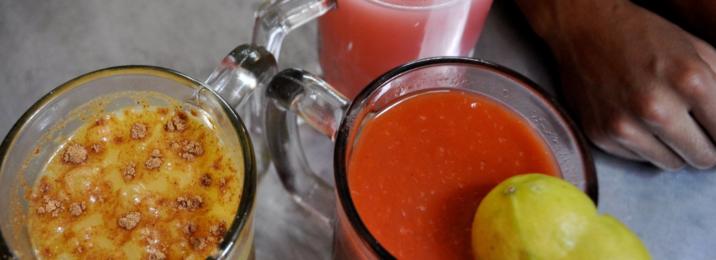The Origins of Pulque
All early civilizations had their own alcoholic drink. In India, it was sura, distilled from rice. In Greece, it was mead, a fermented drink made from honey and water. And, in Mexico, it was pulque, the fermented sap of the maguey (or agave) plant. Naturally, pulque is the one of interest to us. Pulque is still enjoyed today throughout the desert regions of Central Mexico. Thanks to the rocky, dry terrain around Mexico City, travelers can enjoy a taste of this ancient, cultural drink. First-timers should be cautious, though, as it can affect your digestive system. But some good news is that although it’s said to have a strong intoxication effect on your body, you’ll find your mind remains completely lucid.
The History
The origins of pulque dates back to the Aztec people. The Aztecs named pulque’ ixtac octli’, which means white liquor; this is because it’s a distinct milky color. In ancient times pulque was drunk by commoners only during a celebratory feast or ritual ceremonies. However, it was a greatly desired drink among the Aztec nobility and priests, and even for its role in their economy. Plus, it was often served as medicine in pre-Hispanic Americas.
Many Aztec legends of pulque involve the gods. One such legend is of Mayahuel, the Aztec goddess of fertility, and how she fell in love with Quetzalcoatl. It is said that her grandmother sought another husband for Mayahuel. These two then embodied different branches of a tree to be together. The tree, however, was cut down and from the remains, the agave plant weeps their tears. This is the sweet sap from which the pulque is made.
The Production
Making and drinking pulque needs to happen quickly, as it can’t be stored for very long.
- First, the sweet sap, aguamiel, is extracted from the maguey plant in its last year of life and collected twice a day. It secretes up to 600 liters of sap in its final year. Aguamiel means ‘water honey’ in Spanish.
The actual fermentation starts in the plant, where the microorganisms that occur naturally in the plant start the process of transforming the sugar into alcohol.
The sap is collected and poured into ceramic jars or plastic barrels where it’s left to ferment. It can be fermented with bacteria in the air and wild yeast. The seeds of the plant are often added to accelerate the fermentation process.
It then becomes a rich, alcoholic drink of about 3-7% alcohol by volume. It is filled with protein, probiotics, minerals, and vitamins.
Its fermentation process makes it technically a wine, not a spirit as it’s not distilled like tequila or mezcal. Apparently, there were also flavored pulque – with ingredients such as chili peppers.
The Taste and Texture
Pulque has garnered a following for its tart-sweet taste. It is generally white and thicker than most alcoholic drinks, rather like heavy cream. And, it’s got a mucilaginous texture which can be off-putting to first-time drinkers.
Newfound Popularity
Now seeing a resurgence in popularity in modern Mexico, pulque has become popular with young adults and in trendy bars called pulqurłas. Not only is its cultural link a drawcard, but it’s relatively inexpensive. Newer types of pulque are also popping up, called pulque curados, and these include different flavors of pulque. The flavors are generally sweet and created from fresh, natural ingredients such as ginger and fruits.
Are you looking for great authentic Mexican food and legendary drinks? Come to Benito’s in the Fairmount area of Fort Worth. Well known for our breakfast dishes, pico de gallo, fresh gauc, queso flamedo and margaritas, you’ll experience true Mexican cuisine with us, at Benito’s.
To book a table, call us at 817-332-8633, to find out more go to our website.






